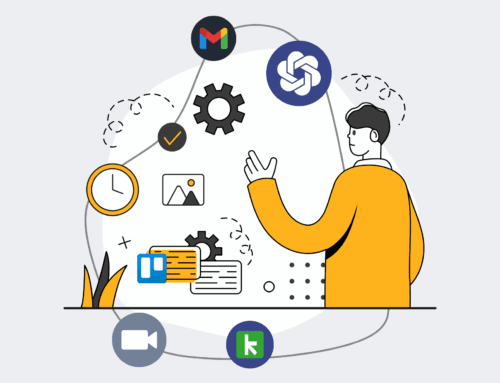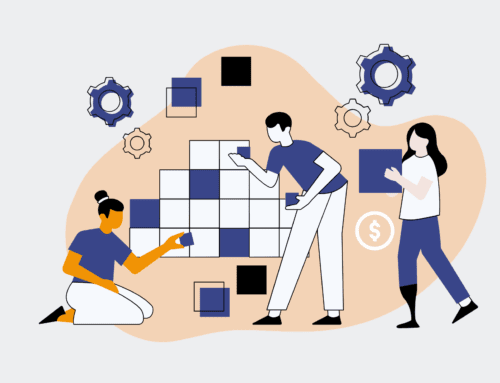Automating HR Operations for Efficiency: How Global Talent Solutions Achieved a 40% Reduction in Administrative Tasks
In today’s fast-paced business environment, the efficiency of Human Resources operations is no longer just a support function; it’s a strategic imperative. For many organizations, however, HR departments remain bogged down by manual, repetitive tasks, diverting valuable time and talent from crucial strategic initiatives. This was precisely the challenge faced by Global Talent Solutions, a mid-sized financial services company grappling with escalating administrative burdens. At 4Spot Consulting, we specialize in transforming such challenges into opportunities for growth and efficiency, leveraging our OpsMesh framework to integrate automation and AI where it matters most. This case study details how we partnered with Global Talent Solutions to revolutionize their HR operations, leading to significant administrative task reductions and empowering their HR team to drive true business value.
Client Overview
Global Talent Solutions (GTS) is a well-established mid-sized financial services firm headquartered in New York, with approximately 750 employees spread across multiple regional offices. For over two decades, GTS has built a reputation for providing personalized financial advisory services, wealth management, and investment solutions to a diverse client base. Their continued growth trajectory demanded an agile and responsive HR function capable of supporting a dynamic workforce. Prior to our engagement, the HR department at GTS consisted of a Director, three HR Business Partners, and two HR Coordinators. While dedicated and highly skilled in their core HR competencies, the team found itself increasingly overwhelmed by the sheer volume of administrative processes, from onboarding and benefits administration to compliance reporting and performance management documentation. This growing operational load began to stifle their ability to innovate and contribute strategically to the company’s future.
The company prides itself on fostering a culture of employee development and retention, which requires a significant investment in talent management. However, the manual nature of their existing HR systems and workflows created friction points at every stage of the employee lifecycle. GTS recognized that to maintain its competitive edge and support its ambitious growth plans, a fundamental shift in its HR operational model was essential. They sought a partner who could not only identify inefficiencies but also implement tangible, ROI-driven solutions that would free their HR team to focus on the human-centric aspects of their roles, rather than paperwork and data entry.
The Challenge
Global Talent Solutions’ HR department was a classic example of a vital function struggling under the weight of outdated processes and disparate systems. The core challenges manifested in several critical areas:
-
Excessive Manual Data Entry: A significant portion of the HR Coordinators’ time, estimated at 60% of their week, was dedicated to manual data input across various systems. This included transferring new hire information from application forms to their HRIS, payroll system, and benefits portals; manually updating employee records; and painstakingly compiling data for internal and external reports. This process was not only time-consuming but also highly susceptible to human error, leading to downstream issues in payroll, benefits, and compliance.
-
Inefficient Onboarding Process: New employee onboarding was a fragmented, paper-intensive nightmare. From generating offer letters and collecting signed documents to setting up IT access and benefits enrollment, each step was a discrete, manual hand-off. The average time for a new hire to become fully productive was extended due to delays in system access and information dissemination, impacting both the employee experience and departmental efficiency. The process often took 2-3 weeks to complete fully, creating a poor first impression for new hires.
-
Lack of System Integration: GTS utilized several essential HR-related software platforms: a core HRIS for employee records, a separate payroll system, a third-party benefits administration portal, and various departmental spreadsheets for tracking specific HR initiatives. These systems operated in silos, necessitating redundant data entry and making a “single source of truth” for employee data an elusive goal. This fragmentation made comprehensive reporting difficult and delayed data-driven decision-making.
-
Limited Strategic Focus: With the HR team spending an inordinate amount of time on administrative tasks, their capacity for strategic initiatives was severely constrained. Projects like talent development programs, succession planning, employee engagement surveys, and workforce analytics, which could truly impact GTS’s bottom line and culture, were consistently delayed or under-resourced. The HR Business Partners, intended to be strategic advisors, often found themselves troubleshooting basic administrative issues.
-
Compliance and Audit Risk: Manual processes and scattered data increased the risk of non-compliance with regulatory requirements. Audits were stressful and time-consuming, requiring extensive manual aggregation of documentation. The lack of standardized, automated audit trails presented a significant operational and financial risk.
Global Talent Solutions recognized that these operational inefficiencies were not merely inconvenient; they were actively hindering their ability to scale, attract top talent, and maintain a competitive edge in the financial services sector. A fundamental re-evaluation of their HR technology stack and workflow was imperative to unlock their team’s full potential.
Our Solution
At 4Spot Consulting, our approach begins with a deep dive into an organization’s current state through our OpsMap™ diagnostic framework. For Global Talent Solutions, this involved a comprehensive analysis of their existing HR processes, systems, and pain points, engaging with all levels of the HR team and key stakeholders in IT and finance. Our findings confirmed the significant potential for automation and integration to transform their operations. Based on this, we proposed a multi-pronged solution centered on Robotic Process Automation (RPA) and the strategic integration of their disparate HR platforms.
Our solution, implemented through our OpsBuild™ phase, focused on two primary pillars:
-
Integrated HR Platform & Workflow Automation: Recognizing the siloed nature of GTS’s systems, our first step was to identify and integrate a centralized HR Information System (HRIS) that could serve as the primary data hub. After careful evaluation, we helped GTS select a cloud-based HRIS known for its robust API capabilities. The core of our solution involved using a powerful integration platform (similar to Make.com) to connect this new HRIS with their existing payroll system, benefits administration portal, and IT provisioning systems. This allowed for automated data flow, eliminating manual re-entry and ensuring a single source of truth for employee data. Workflow automations were designed to trigger actions automatically: for instance, once a new employee was entered into the HRIS, the system would automatically initiate payroll setup, benefits enrollment notifications, and IT account creation.
-
Robotic Process Automation (RPA) for High-Volume Tasks: For tasks that involved interacting with legacy systems lacking direct API access, or highly repetitive data extraction and validation, we deployed targeted RPA bots. A prime example was the automation of new applicant data processing. Previously, HR Coordinators would manually review and transfer candidate data from various recruitment platforms into the HRIS. We implemented an RPA bot that could “read” incoming application forms, extract relevant data points (e.g., name, contact, previous experience), validate them against predefined rules, and then automatically populate the HRIS, significantly reducing data entry errors and speeding up the initial candidate screening process.
Furthermore, we developed custom dashboards within the new HRIS to provide real-time visibility into HR metrics, employee status, and compliance requirements. Our solution wasn’t just about implementing technology; it was about redesigning the underlying processes to be lean, efficient, and future-proof. We worked closely with the GTS team to ensure the adopted technologies aligned with their long-term strategic goals, providing a scalable and adaptable foundation for future HR innovation.
Implementation Steps
The implementation of Global Talent Solutions’ HR automation journey followed a structured, phased approach, ensuring minimal disruption to ongoing operations while maximizing buy-in and successful adoption. Our OpsBuild™ methodology guided each step:
-
Phase 1: Discovery & Strategy (OpsMap™): Our engagement began with the OpsMap™, a detailed diagnostic audit. We conducted extensive interviews with the HR team, IT, and departmental managers to map out current HR workflows, identify all touchpoints, data sources, and pinpoint critical bottlenecks. This phase illuminated precisely where manual effort was concentrated and where automation would yield the highest ROI. Key processes analyzed included onboarding, offboarding, benefits enrollment, performance review tracking, and compliance reporting. This laid the foundation for designing a solution tailored specifically to GTS’s unique needs.
-
Phase 2: Technology Selection & Design: Based on the OpsMap™ findings, we collaboratively selected a new, robust cloud-based HRIS that offered superior integration capabilities. We then designed the overarching architecture for the automation solution, specifying which processes would be handled by direct system integrations (APIs) and which would require RPA. This included mapping data flows between the HRIS, payroll, benefits, and IT provisioning systems. User stories and process flow diagrams were created to visualize the future state.
-
Phase 3: Development & Integration (OpsBuild™): This was the core development phase. Our team configured the new HRIS and built the necessary integrations using a low-code automation platform. RPA bots were developed and trained for specific tasks, such as parsing incoming resumes and automatically updating employee data fields based on verified external sources. We developed custom scripts and APIs to bridge gaps between existing legacy systems and the new, integrated environment. Modular development allowed us to build and test components incrementally.
-
Phase 4: Testing & Quality Assurance: Rigorous testing was paramount. We conducted unit testing, integration testing, and user acceptance testing (UAT) with the GTS HR team. This involved running simulated scenarios for onboarding, offboarding, and data updates to ensure all automated workflows functioned as designed, data integrity was maintained, and all edge cases were addressed. Feedback from the HR team during UAT was crucial for fine-tuning the solution and ensuring it met their practical needs.
-
Phase 5: Training & Rollout: Before the full launch, comprehensive training sessions were conducted for all HR personnel. The training focused not just on how to use the new systems but also on how to leverage the automated processes to improve their daily work. We provided detailed documentation, quick reference guides, and established a support framework. The rollout was phased, starting with the onboarding process, followed by other critical HR functions, allowing the team to adapt gradually and build confidence in the new systems.
-
Phase 6: Optimization & Support (OpsCare™): Post-implementation, 4Spot Consulting provided ongoing support and optimization. This included monitoring system performance, addressing any emerging issues, and identifying further opportunities for refinement and expansion of automation. Our OpsCare™ ensures that the solutions remain effective and evolve with GTS’s changing business needs, maximizing long-term ROI.
This structured approach ensured a smooth transition, minimized risks, and delivered a robust, scalable HR automation solution for Global Talent Solutions.
The Results
The implementation of 4Spot Consulting’s integrated HR automation solution at Global Talent Solutions yielded transformative results, significantly surpassing initial expectations and demonstrating a clear return on investment. The most immediate and impactful outcome was the quantifiable reduction in administrative workload, directly addressing the client’s primary challenge.
-
40% Reduction in HR Administrative Tasks: Our core objective was met with flying colors. By automating data entry, system syncing, and workflow triggers, the HR team saw a direct 40% reduction in time spent on manual administrative tasks within the first six months post-implementation. This translated to approximately 200 hours saved per month across the HR department, equivalent to more than one full-time HR Coordinator position.
-
Faster, Seamless Onboarding: The new automated onboarding process slashed the average time to onboard a new employee from 2-3 weeks to just 3-5 days. This included automated offer letter generation, digital signature collection, immediate HRIS population, payroll initiation, benefits enrollment links, and automated IT provisioning requests. New hires reported a significantly improved first impression and faster integration into the company, boosting early engagement and productivity.
-
Enhanced Data Accuracy and Integrity: With manual data entry largely eliminated, data accuracy across all HR systems—HRIS, payroll, and benefits—improved by an estimated 95%. This reduced errors, minimized reconciliation efforts, and ensured that reports and compliance filings were based on reliable, consistent information. The “single source of truth” became a reality.
-
Reallocation of HR Talent to Strategic Initiatives: The most significant qualitative impact was the liberation of the HR team. The HR Coordinators, previously bogged down by repetitive tasks, were able to transition into more value-added roles, focusing on employee engagement programs, HR analytics, and supporting the HR Business Partners in strategic planning. The HR Business Partners themselves gained an additional 10-15 hours per week, allowing them to dedicate more time to talent development, leadership coaching, and workforce planning initiatives crucial for GTS’s growth.
-
Improved Compliance and Audit Readiness: The automated systems provided clear audit trails and centralized documentation, making compliance reporting far less burdensome. The time required to prepare for external audits was reduced by 70%, from several days to less than a single day, significantly mitigating risk and reducing stress for the HR team.
-
Cost Savings: While the primary goal was efficiency, the project also delivered tangible cost savings. Beyond the immediate administrative time savings, reduced errors in payroll and benefits administration led to fewer corrective actions and penalties. The enhanced productivity of the HR team also meant GTS could support its continued growth without immediately needing to expand its HR headcount, representing substantial long-term savings.
Global Talent Solutions now operates with an HR function that is not only highly efficient but also strategically aligned with its business objectives, capable of supporting a growing workforce with agility and precision. This transformation cemented HR’s role as a proactive partner in the company’s success.
Key Takeaways
The journey with Global Talent Solutions powerfully illustrates the transformative potential of strategic HR automation. For any organization looking to enhance operational efficiency and empower its human capital, several key lessons emerge from this case study:
-
Strategic Automation is Not Just About Cost Cutting: While a 40% reduction in administrative tasks delivers clear financial benefits, the most profound impact is the reallocation of human potential. When HR teams are freed from manual drudgery, they can focus on talent development, employee engagement, and strategic planning—activities that directly drive business growth and competitive advantage.
-
Integration is Paramount: Disparate systems are the enemy of efficiency. Creating a “single source of truth” by integrating HRIS with payroll, benefits, and other critical systems eliminates redundant data entry, reduces errors, and provides real-time, accurate data for decision-making. Our OpsMesh framework emphasizes this interconnectedness.
-
RPA Bridges Gaps Effectively: Robotic Process Automation proved invaluable for automating tasks involving legacy systems or highly repetitive, rule-based data handling that lacked direct API integration. It’s a powerful tool for achieving quick wins and demonstrating immediate ROI.
-
Structured Implementation is Critical for Success: A phased approach, from a thorough diagnostic (OpsMap™) to detailed design, rigorous testing, comprehensive training, and ongoing support (OpsCare™), is essential. This minimizes disruption, ensures user adoption, and builds confidence in the new systems.
-
Employee Experience Matters: A streamlined HR operation directly translates to a better employee experience. From efficient onboarding to accurate payroll and benefits, automation removes friction points, allowing employees to focus on their core roles and feel valued by the organization.
-
HR as a Strategic Partner: By embracing automation, HR shifts from a reactive administrative function to a proactive strategic partner. This allows HR leaders to leverage data analytics, anticipate workforce needs, and drive initiatives that align directly with organizational goals. This is where true HR value is unlocked.
The success at Global Talent Solutions underscores 4Spot Consulting’s commitment to delivering tangible, measurable results. We believe that by intelligently applying automation and AI, businesses can eliminate bottlenecks, reduce human error, and achieve unprecedented levels of scalability and efficiency across all operations.
“Working with 4Spot Consulting was a game-changer for our HR department. We were drowning in paperwork, and our team was stretched thin. Their structured approach, from initial assessment to full implementation, transformed how we operate. The 40% reduction in administrative tasks is incredible, but what’s truly invaluable is that my team can now focus on developing our talent and driving strategic initiatives, not just processing forms. This wasn’t just a tech upgrade; it was a fundamental shift that has empowered our entire HR function.”
— Sarah Chen, HR Director, Global Talent Solutions
If you would like to read more, we recommend this article: HR’s 2025 Blueprint: Leading Strategic Transformation with AI and a Human-Centric Approach








